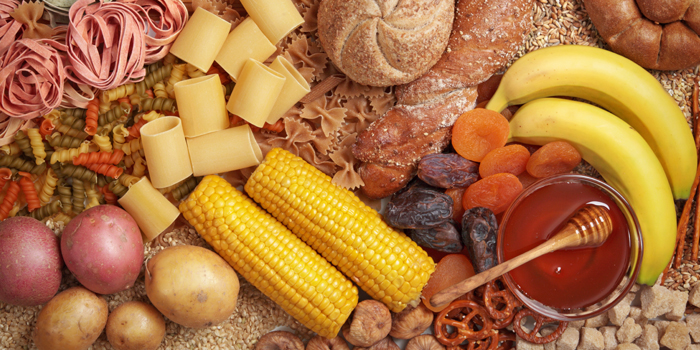
If you are into bodybuilding in the least bit, you’ve heard of insulin before. It is said to be, along with Growth Hormone, the biggest contributing factor to the era of the mass monsters. If you look at bodybuilders from the 70’s and 80’s as compared to the bodybuilders of the late 90’s and 2000’s, it is almost laughable how much size these guys have put on.
Now, if you are here for an insulin protocol I am here to break your heart, because we are not going over that. Just do your due diligence and know that exogenous insulin can kill you if done incorrectly. What I am going to go over instead is how we can manipulate insulin in or own bodies naturally to improve our results.
Before getting into the ins and outs of how to manipulate insulin in our bodies to create great results, let's get down to the nuts and bolts of what insulin is and why it’s important. Insulin is a hormone produced in the pancreas that regulates the amount of glucose in the blood. It regulates the metabolism of carbohydrates and fats in the body, and promotes protein synthesis and glucose utilization. Insulin also has the ability to prevent breakdown of muscle tissue.
For these reasons, insulin can be a highly effective tool to use when trying to gain new muscle and recover from tough workouts. Insulin is secreted when we consume carbohydrates and proteins and it can build up fat cells and muscle cells equally. This is definitely the worst part of insulin, and I will discuss why and how to avoid later on in this article. Lastly, it relaxes the muscles of blood vessels, which cause them to dilate and allow more blood to reach the muscle. This will allow the shuttling of nutrients like glucose and amino acids to flow in and through.
RELATED: The Intricacies of Peri-workout Nutrition
Insulin, with all its greatness, has a major flaw of building up fat cells and muscle cells equally. This means that if you eat food that spikes insulin (such as sugary carbs) and eat some fat along with that meal, your body will not only shuttle the carbs to muscle cells but it will also drive that fat to those fat cells. That doesn’t mean you shouldn't eat fats, as they are an integral part of a good diet. It simply means you have to time things better.
There is an optimal time to spike insulin with higher glycemic carbs, which is around the workout. Anytime away from that time window, you can lower the carbohydrates and have them be a lower glycemic index, which will slow down the spike. These are the meals you would want to incorporate your fats into. The glycemic index is a good way to know what foods will spike insulin rapidly and which ones will have a slower more controlled insulin release. Things like muffins, white breads, honey, and jams will spike insulin fast and things like brown rice, sweet potatoes, and oatmeal will have a slower, more controlled release. This is a great tool to use so you know which foods do what and then you can incorporate those foods at certain times to get the desired result.
Timing of carbohydrates is extremely important. It allows you to manipulate the release of insulin, either fast or slow. The consumption of higher glycemic carbs pre, during, and post workout are a great tool to spike insulin to reap the benefits. The biggest benefit to me of spiking insulin at these times is the fact that it not only speeds up the rate of protein synthesis but it blunts the catabolic effects of training. As you train, you begin to tear down your muscles in hopes that you will be able to eat, sleep, and recover enough for them to grow back before your next session.
With timing and spiking your insulin, you can significantly reduce the amount of tear that goes on, which will in turn expedite the rate you recover and allow you to train harder and heavier every time. To be able to get a head start on the recovery process is crucial, because the faster we recover the more we can train and the chances of injury are reduced. The goal here is a rapid release of insulin, so we want to minimize anything that will get in the way of that; foods that have high fiber in them should be avoided, foods that are high in fat should be avoided, and foods that you have trouble digesting should be avoided. All these foods will blunt the release of insulin, thus negating the positive effects.
As you can see, we can definitely push insulin and reap the benefits without having to take any. So why is it so prevalent in the sport of bodybuilding? Because over time we start to develop insulin resistance, especially when we are in a calorie surplus or if we are really pushing carbs hard. Bodybuilders also take growth hormone, which makes them insulin resistant as well, so they have to push insulin with it. So what does insulin resistance mean? It means that your body has developed a resistance to insulin due to the over-consumption of carbs that continuously spikes it, so your body then doesn’t effectively utilize it anymore. This is where the trouble begins. Instead of having that hard lean look, you start to get a lot softer and fatter. On top of that, your glucose starts to build up in the blood instead of being absorbed by the cells, which can lead to type 2 diabetes. So how do we avoid this? There are a few ways to fix this problem and it is with diet, training, and supplements.
Methods of Dieting
When it comes to diet and insulin resistance there are a few ways to avoid this. You could do type of carb cycling approach, a bulk and mini cut approach, or a nutrient timing approach where carbs are cycled in only around training hours. I prefer to take a carb cycling approach with diets for several reasons, primarily to keep insulin sensitivity high and to run the same diet in a calorie surplus a little bit longer.
RELATED: Unraveling Insulin Resistance
Let me say that being in a calorie surplus for an extended period of time, regardless of the diet, you will start to form some type of insulin resistance. Sorry, you can’t bulk forever. The idea behind carb cycling is that you have high carb days for your highest volume days, medium carb days for your other training days, and low carb days for your off days. This change in carbohydrates will allow your body to take a break and reset from time to time so you can push the diet longer without getting too much insulin resistance. You just have to make sure your low carb days are pretty low and for your medium days, the carbs are timed around training.
Carbohydrate Timing
This brings us to another way to keep your body from becoming insulin resistant: timing and manipulation of carbs. The best times to consume carbs and really the only time your body really truly needs them is pre, during, and post workout. Carbs are just our bodies main source of energy, so when you are not exercising, they are not necessarily needed, especially in higher amounts. So putting your carbs in that workout window will keep insulin sensitivity high because they are immediately being used and not just flooding your body with nowhere to go. Again just like carb cycling you want a lower carb diet on your off days. With this approach your diet will consist of a lot of proteins and fats with carbs around your workout window. Those carbs can be pushed higher than normal because your body will need them and better utilize them. Like I said above, no matter how long you push a diet you will have to have a time to be in a calorie surplus and in a calorie deficit so you have a period of gaining and a period of cutting. You can't do either one of them forever. Setting up mini cuts with your bulks will help prevent insulin resistance as well. It doesn’t have to be a crazy amount of time; anywhere from 3-6 weeks should do the trick of letting your body reset and allow you to start gaining again.
Glucose Disposal Agents
Another great way to keep your insulin in check so you can keep pushing forward is to look into glucose disposal agent supplements or GDA. There is a whole host of supplements you can get that helps shuttle carbohydrates and help with insulin sensitivity. Some of my favorites are berberine, NA-R-ALA, chromium picolinate, Slintrol (an all in one GDA), Matador (an all in one GDA), and cinnamon. These supplements aid in the breakdown and shuttling of carbohydrates, and regulate and control insulin spikes. Couple these with higher carb meals and you should be able to keep insulin sensitivity higher for longer periods of time.
Training
The last thing to help with insulin resistance is how you train, it is pretty simple: you have to train hard. The more volume you can accumulate, the more you will dump glycogen. Volume is derived from reps plus sets plus load, so you have to lift heavy for a lot of sets and reps. You can’t go to the gym and do some flyes and kick backs and think thats good enough for the day.
Compound movements should be the base of your plan. Do them in the 6-12 rep range for multiple sets. By training this way, your body will deplete the glycogen stores. empty glycogen stores then give carbs a place to go when they are consumed. So if you aren’t pushing hard in training, those carbs that you are consuming will have nowhere to go, thus being stored as fat. Based on how your training is set up and the body part you are working, you can manipulate your carb intake as needed which will help keep things rolling. Legs, chest and back will require the most amount of carbs and shoulders and arms you simply don’t need as many.
By matching your diet to your training, and supplementing with GDA’s, you will be able to push the calories harder in the offseason without the accumulation of as much fat. I am not saying this will keep you lean — when you are in a calorie surplus for a long time, fat will come. But by taking these things into consideration and applying them in a smart manner, you will be able to make clean gains for a longer time. You will also stay in a healthier state and avoid insulin resistance.
Tony Montgomery is an elite level powerlifter in the 220-pound and 242-pound weight class. He spent four years in the Marines and studied Exercise Science at Florida Atlantic University. He’s the owner of TM Nutrition where he offers nutrition and training programs. Check out his stuff at tmnutrition.net or email him at tony@tmnutrition.net.











3 Comments